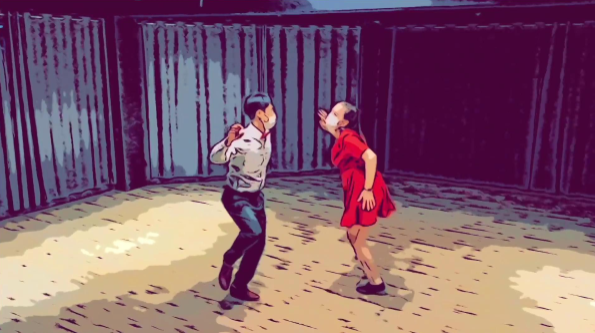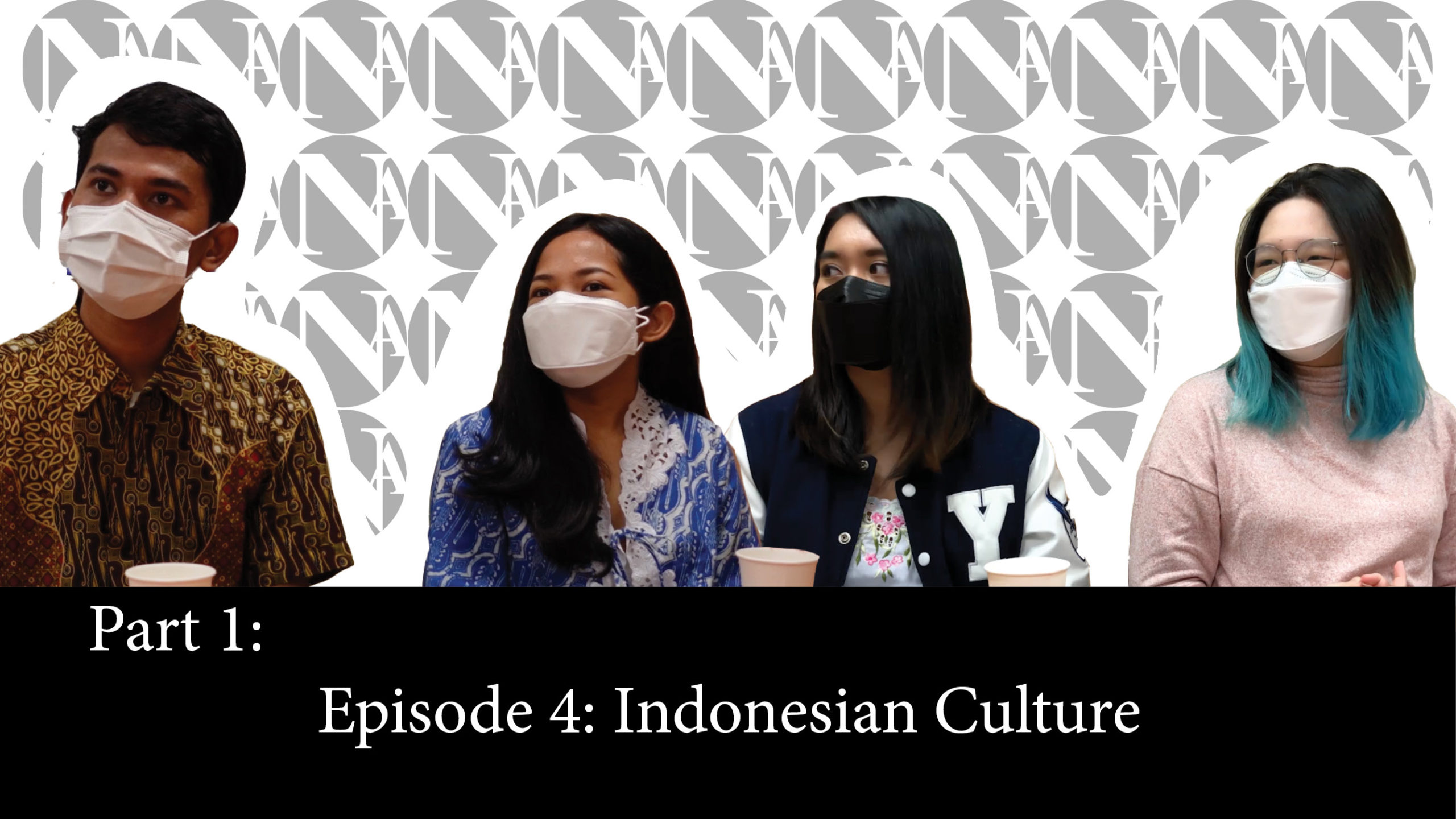A socially-distanced social dance. Video provided by Kirsten Lee.
Seoul, South Korea. The city of K-POP, kimchi, and late night shots of soju. But there’s a lot more to it than the stereotypes you can read about in Lonely Planet. Think live jazz bands, vintage clothes. Think speakeasy bars packed full of dancers doing The Big Apple or Fallin’ Off The Log. You might not have guessed it by now, but Seoul is the swing dance capital of the world.
Swing dance or The Lindy Hop, named after acclaimed aviator Charles Lindbergh, is the father of all swing dances; from the jive to blues to Balboa. But how did this boppin’ dance from 1920’s Harlem lift off in Korea? I talked to three long-time dancers to find out how Lindy made the Hop across the Pacific.
“Swing dance started in the 1920s and 30s in Harlem, New York,” said Kirsten Lee, 31, Busan. “I think about the people who were dancing then and the hardships they faced. A lot of them worked on the train tracks or in the post office. Six days a week, twelve hours a day. They went to swing clubs to relieve stress and dance the night away.”

“Swing is a way of forgetting about everything and dancing your stresses away.” – Photo by Kirsten Lee.
It’s the 2020s now and a lot of people in Korea can relate. They work some of the highest hours per week out of all OECD countries, behind only Mexico and Costa Rica. That’s about 9 more weeks of work per year compared to their counterparts in the UK and Australia. No wonder so many have turned to dancing their stresses away.
While jazz may have faded away, swing never truly died. Inspired by that Gap Commercial, Swedish dancers recruited Lindy legends Frankie Manning and Norma Miller to spearhead the early 90s swing revival. And Alex Nah, a Korean-American dancer, came to Seoul and started teaching the basic steps for free in local parks. “It became really popular,” said Kirsten, “I think that’s because dancing was taboo in Korea”.

To an outside observer, swing dance has a peculiar blend of comic and wild movements. Photo by wikicommons.
Korea doesn’t have much of a history of couple dancing. That’s probably because of deep-rooted Buddhist and Confucian ideas. Gender roles were separated, and with women expected to take care of the household, the idea of going out and dancing with strangers almost unthinkable.
But with the growing influence of Western culture, the thought of men and women meeting up to dance became more acceptable. It just took time to come out of the shadows of hostess bars and into the parks of Seoul.
“My parents’ generation didn’t have time for hobbies,” said Lee Hyeon-dong, 34. “Korea was so busy back then. But nowadays? Many people want to try new things.” It’s no secret Koreans have always been busy. And the generation who grew up in the post IMF-crisis world faced widespread bankruptcy, redundancy and pay cuts. No wonder they didn’t all feel like swinging out on the dance floor.
To an outside observer, swing dance has a peculiar blend of comic and wild movements. There’s feet flying and bodies hurtling around the dance floor. But there’s a serious side behind all that fun. “When I meet my foreign friends they say that having fun is the most important part of dancing,” Hyeon-dong said. “But many Koreans think that if they can’t dance very well, their partner won’t be happy. So we try to learn more and take lots of extra lessons.” Suffice to say, swing is a serious deal in South Korea.

“It’s not just for dancing. It’s a way to meet people.” – Photo by Lee Hyeon-Dong.
Choi Eun-Ji, 31, has been dancing in Seoul for years. She told me Korea is the top swing destination in Asia. “A lot of my foreign friends come to Korea solely for swing. Seoul’s got eleven bars, all around Line 2, and you can dance seven days a week. No-other city in the world has this.” With an estimated active dancer population of 7,000 – 8,000 swingers, she’s not wrong.
I asked her what it was about this hip dance from 1920s Harlem that gets Koreans turning up all week to work up a sweat on the dance floor. She said a lot of people use it as an opportunity to make connections. “A lot of Korean office workers are in I.T., for example. They only talk about computers all day. I often hear guys say, ‘Ah if you go (swing dancing) you can hold a woman’s hand, you can date.’ So it’s not just for dancing. It’s a way to meet people.”
Stepping into a swing bar seems to be enough to hook you. “The bars are usually in the basement,” said Eun-Ji. That’s to avoid noise complaints from any neighbours who didn’t catch the jitterbug. “You can hear the jazz music and you when you open the door; wow. It’s like a new world. You feel like something extraordinary is happening down there. At the time I was stressed from work, but the music and moving was a good relief and everyone looked so happy. That made me really admire them.”
While swing dance is as American as blue jeans and apple-pie, it’s taking on its own shape in Korea. “They don’t really use English here, so (swing) it’s kinda becoming a separate entity,” said Kirsten. “And improvisation is a bit of a foreign concept here, because of the top-down learning system. Foreign dance teachers call it K-Lindy Hop. When they come over to teach something, it’s supposed to be adapted to your own style. But they come back a year later and see everyone looks like them on the dance floor.” If art is an ever changing dance of appropriation then I guess imitation is the highest form of flattery after all.

“Lindy hop makes people feel really happy. If you try it once, you’ll get addicted.” – Photo by Choi Eun-Ji
But not everything is swell in the vintage world of swing. Coronavirus has cast its ugly shadow. “Nobody dances,” Hyeon-Dong told me. “Everyone is waiting for COVID to disappear. And these days? I’m just trying to find other hobbies I can do alone at home.”
Most swing bars make their money from entrance fees. And with the majority of them forced to close due to COVID restrictions, Seoul’s status as the swing dance capital of the world might be off-beat. So, how’s Eun-Ji coping with all this extra free time? “I started knitting instead. A year’s passed now and I really wanna dance. I miss the people. I miss the community.”
Every April, swingers dancers would converge in Seoul for Camp SwingIt. A three day bonanza of dancing; featuring live jazz bands and dancers from the world over. One of the highlights of the international Lindy Hop calendar. Now? It’s been forced to close its doors for the second year in a row.
Some dancers have turned to hobbies. Others have been satisfying their longing for Lindy via online classes. Eun-Choi tells me there’s a glimmer of hope; “After Lunar New Year, the community wants to start classes again. Nothing too big. Maybe private lessons or small classes.” With social restrictions easing in Korea, more dancers are feeling comfortable with the new normal. COVID’s taken a lot of things from us in recent times, but the spirit of dance and community has endured through world wars and harder times. With a little time it won’t be long till the bars are once again packed with cool cats swinging out on the dancefloor.

“I think about the people who were dancing then and the hardships they faced. A lot of them worked on the train tracks or in the post office. Six days a week, twelve hours a day.” – Photo by wikicommons.
 Daniel Engel did his Masters in dead languages but these days his interests are more modern. In order to escape Welsh weather, he told his parents he was going to live in South Korea for a year. That was a decade ago. When he’s not writing an article or reading a book, he’s trying to untangle the mysteries of Korean grammar. He has written for NOVAsia before.
Daniel Engel did his Masters in dead languages but these days his interests are more modern. In order to escape Welsh weather, he told his parents he was going to live in South Korea for a year. That was a decade ago. When he’s not writing an article or reading a book, he’s trying to untangle the mysteries of Korean grammar. He has written for NOVAsia before.
- “I Love My Body”: Hwasa and Female Empowerment in K-Pop and Korean Society - May 6, 2025
- English Fever in South Korea - February 24, 2025
- South Korea’s Medical School Expansion – Cure Worse than the Disease? - October 20, 2024






